Two Families of Alphabets
Throughout the Middle East, graffiti is found in a number of different forms, but they seem to fall into two distinct families of alphabets. These are important, for Nabataean inscriptions are often found in the same location as inscriptions from other languages. This intermingling of alphabets creates a problem. Was the area overrun at a later period by people with a different alphabet, who decided to inscribe their names and activities on the same rock locations as the previous Nabataeans? Were there two groups of people living at the same time, or could it be possible that the Nabataeans actually had two or three different languages or scripts, one for legal and religious dealings and one for common occasions?
North Semitic Alphabets
This alphabet was the earliest fully developed alphabetic writing system in the Arabian Peninsula. It was used in Syria as early as the 11th century BC and is probably the forerunner of all subsequent alphabetic scripts, with the possible exception of those scripts classified as South Semitic. It was apparently developed from the earlier writing systems seen in the Canaanite and Sinaitic inscriptions. The North Semitic alphabet gave rise to the Phoenician and Aramaic alphabets, which, in turn, developed into the European, Semitic, Indian, Nabataean and eventually Arabic alphabets.
South Semitic Alphabets
This term refers to any of a group of scripts originating in the Arabian Peninsula about 1000 BC. These scripts, most of which were used only in the Southern Arabian Peninsula, are of note because of their great age and because of the lack of any clear link between them and the North Semitic alphabet.
Of nine distinct scripts, only Safaitic, Sabaean, and Ethiopic occur outside the Arabian Peninsula. The Ethiopic alphabet, developed from Sabaean in Ethiopia, is the only one still in use. Its modern form is sometimes called Amharic.
The South Arabian alphabet was used primarily in the Sabaean and Minaean kingdoms in the Southern edge of the Arabian Peninsula. It appears around 500 BC, and continued to be used until around 600 AD, at which time the entire Arabian Peninsula was converted to Islam and Arabic became the most important language.
In Northern Arabia, and in the Nabataean region, South Semitic alphabets were used by the Lihyanite, Thamudic, and Safaitic languages.
Safatic Inscriptions
The majority of Safatic inscriptions and rock drawings are found in the volcanic basalt region, called the harra, of northeastern Jordan. Archeologists have found inscriptions that record pastoral activities such as grazing camels, goats and sheep and relate that they migrate or that they encamped or spent the spring or winter in a particular place. Many of the inscriptions express grief over the death or absence of a friend or relation. These and other texts are often found in association with cairns, which were sometimes built over graves.
Interestingly enough, most of the deities invoked in the inscriptions are known from the Nabataean pantheon. The authors pray for security from enemies, for booty, and plentiful grazing, and frequently end with a curse on anyone who defaces the text. As with Thamudic inscriptions (see below), the rock art that often accompanies these texts gives us a great deal of information about the fauna of the region, and the activities of its inhabitants. Hunting and fighting are favorite subjects and these drawings can tell us much about the weapons and tactics used by these nomads.
The camel, especially the young she-camel, which is found with many Safaitic inscriptions, played an important role in nomadic life (Winnett and Harding 1978:22). Other drawings depict things like a horseman with a lance and an animal with long horns, possibly an oryx.
A database of Safaitic inscriptions was developed by the Faculty of Oriental Studies in Oxford England. The aim of the Safaitic Database was to capture the text and translation of each of the approximately 20,000 of these inscriptions, placing them on a web site, so that scholars and others can study them. By 1995, the vast majority of the sites mentioned by early travelers were rediscovered and marked on accurate maps while hundreds of previously unknown inscriptions were recorded. Of particular interest was the Al-Isawi site with over 2,000 inscriptions.
Thamudic
Both Thamudic and Safaitic inscriptions are found on rock faces and boulders scattered throughout the deserts of Arabia. Archeologists have discovered that much information can be gained by searching a limited area and making a comprehensive record of all the inscriptions and rock pictures. For example, in 1986 and 1987 three sites were selected for a systematic survey in the Wadi Judayyid area in the Hisma Desert of southern Jordan, near Wadi Rumm.
Small areas in the rock fields were marked out and a search was made by walking back and forth systematically across these areas so that, as far as possible, no inscriptions or rock drawings would be missed. Each inscription was read and an accurate copy made. All the material was then photographed in black-and-white and color and the inscribed boulders were located on a plan.
1,337 Thamudic inscriptions, one Nabataean text, and 560 rock drawings of various periods were found and recorded during these two years. The inscriptions from these sites offer prayers to Lat, Dushara, and Kutbay, deities that belong to the Nabataean pantheon. Some of the texts are concerned with hunting and many of the drawings depict the prey: ibex, ostriches and lions, as well as domestic animals, camels, horses, and dogs. The writers of the inscriptions often express their love for young women and relate their amorous adventures.
One, Two, or Three Languages/Scripts
In his book on the Nabataeans, Doctor Negev of the Institute for Advanced Study in Princeton, New Jersey suggested that the Nabataeans might have written in two different languages. He felt that the Nabataean inscriptions were all basically religious in nature, engraved by pilgrims visiting religious centers. Detailed funerary texts do not express grief but are legal documents. For example, one inscription found near the city of Oboda in the Negev mentions King Obodas as ‘Obodas the god’. Garm’alahi son of Taym’alahi dedicates the setting up a statute to him and then added to the Nabataean text he gives an explanation in Arabic why he made the dedication. It reads as follows: “For Obodas works without rewards or favor, and when death tried to claim us, when a wound of ours festered, he did not let us perish.” Why did the inscriber change the language of the inscription? The dedication is in Nabataean, the explanation in another script. Was the Nabataean script reserved for religious and legal purposes?
Many warnings are written on tombs, and these are all in Nabataean. For example, one of 11 AD, lists who can be buried in the tomb. It then ends: “Whosoever acts otherwise than is written above, let him be liable, in view of the sanctity of what is written above, to pay a sum total of 1,000 sl’in of Aretas to Dushares the god and to our lord Aretas the king similarly. In the month of Shebat, year 13 of Aretas king of the Nabataeans who loves his people.”
Dr. Negev observed that none of the Nabataean inscriptions, of which there are many thousands, refer to love, hate, war, or any other human activity. From these, we learn nothing of Nabataean life, only about royalty, military, and temple administration.
In the same geographical region as the Nabataean inscriptions there are some 15,000 written records in Safatic, an Arabic dialect and script derived from one of the sophisticated south Arabian alphabets. These contain more than 5000 personal names as against 1,263 personal names recorded in the Nabataean inscriptions. Unlike the Nabataean inscriptions, few are of a religious nature; most allude to daily life. Many speak of love, grief, war, some even refer to wars of the Nabataeans, events never mentioned in the Nabataean inscriptions. They speak of digging wells, the disappointment of not finding water, the looking after animals, the hunt, and other aspects of daily life. There are also references to tribes and clans. In the Nabataean inscriptions, there are generally no such references.
It is interesting to note that only a few “Safatic” inscriptions are found in the Negev and the Southern Sinai. There seems a correlation between the decline of the Nabataean script and the rise of the “Safatic” script. On one hand, in areas where, by the end of the first century AD, the Nabataean script dwindles, the Safaitic inscriptions increase. On the other hand, in the Negev, and especially the Sinai, where Nabataean was in use until the very end of the third century, the “Safaitic” inscriptions are rare.
Looking at these facts, Dr. Negev suggests that the so-called “Safaitic” inscriptions are not the product of anonymous Arab tribes, but rather are the records of the Nabataeans themselves. The discovery of the Nabataean-Arabic bilingual inscription at Oboda, only confirms the well known fact that the Nabataeans did indeed speak Arabic.
Would it not be strange that a people who knew how to write from early times would not make records in their own language? Dr. Negev suggests that the Nabataean and Safaitic inscriptions should be treated as two components of the same human phenomenon and fitted together as two unequal parts of the same history that sheds light on the Nabataean culture as a whole.
But other archeologists protest that it would be ridiculous for a people to have two languages, and for them to use them in this way. They point to a few inscriptions that seem to break this rule as proof that Dr. Negev could not be right. However, I feel that it is not unusual for people to have a different religious or commercial language than their everyday language. This is common practice today among German Mennonites who use High German for their religious language, and a Friesian dialect or English for their everyday language. Even Latin was the lingua franca in Europe until the 18th century, used by academics and educational institutes, as well as the Roman Catholic Church, as a religious language for many centuries.
So in the end, the Nabataeans remain as mysterious and elusive as ever. One of the most intriguing suggestions put forward yet is that the Nabataeans purposely adopted the South Semitic alphabets, so as to be able to secretly write their language. Since all the nations around them were using North Semitic alphabets, they could often make out what each other’s writing said. By using the remote and different South Semitic alphabets, the Nabataeans could effectively make their writings illegible, even to others who spoke some Nabataean.



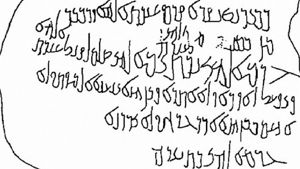
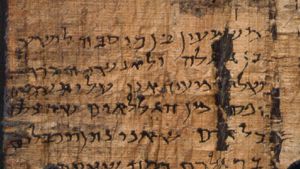
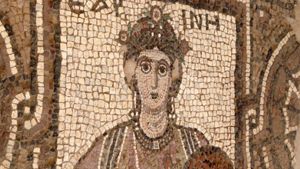

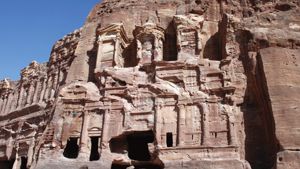
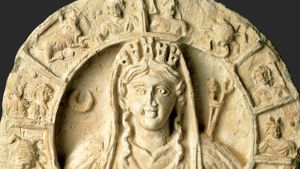
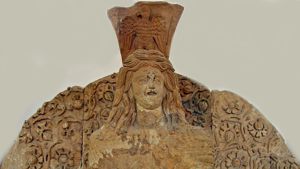
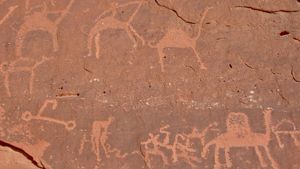
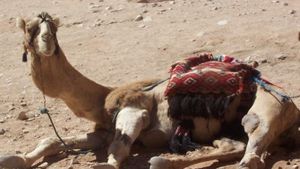
Page Discussion
Membership is required to comment. Membership is free of charge and available to everyone over the age of 16. Just click SignUp, or make a comment below. You will need a user name and a password. The system will automatically send a code to your email address. It should arrive in a few minutes. Enter the code, and you are finished.
Members who post adverts or use inappropriate language or make disrespectful comments will have their membership removed and be barred from the site. By becoming a member you agree to our Terms of Use and our Privacy, Cookies & Ad Policies. Remember that we will never, under any circumstances, sell or give your email address or private information to anyone unless required by law. Please keep your comments on topic. Thanks!